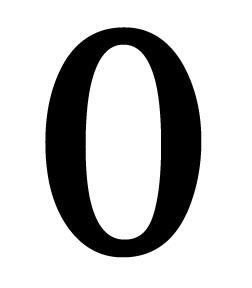An Introduction To The Art Of Arithmancy
This book will give a first year introduction to the magical properties of numbers and how to use them.
Last Updated
05/31/21
Chapters
4
Reads
3,961
A History Of Numbers: Zero
Chapter 3

Zero is a placeholder number with a very interesting history. It is the base from which we begin to quantify objects, but in and of itself it isn’t a real number; rather it is an absence of numbers. The concept of zero was first recorded by Egyptians in 1740 BCE. The Egyptians used the same symbol for zero in their texts as they did to represent the word beautiful. Just like we do, the Egyptians use a base ten number system. That means, in simple terms, that the way we quantify different amounts corresponds to the Ancient Egyptian method of counting, and the power of our numbers would correspond to that of the Egyptians.
An Indian muggle scholar, Pingala, used a binary (base two) number system using zero that was similar to the muggle invention of Morse Code. Eventually, most cultures started to use zero along with the traditional numbers in calculations, but it is fascinating to me that originally cultures did not include zero as a useful number. The brilliant greek wizard and arithmancer Pythagoras of Samos saw zero as the perfect form, where everything exists and from which all is created. Pythagoras saw zero as the most powerful of any number, as opposed to the usual seven. He was, of course, disproved eventually, but his obsession with zero led to many important discoveries and theorems that you will learn about if you continue your study of arithmancy.
Thought Experiment: Across many wizard and muggle cultures, the number zero has been thought to represent light, eternity and perfection. Why do you think the symbol that represents the absence of being would be thought of that way?

